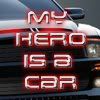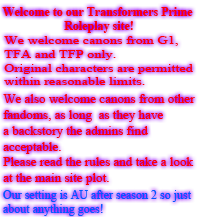Post by Jetta Windstar on Oct 4, 2012 17:34:06 GMT -8
For any of you who want to pursue flying, especially as it relates to choppers, here are some rules you can follow to ensure safe and successful flights as a student pilot and/or sole Pilot In Command.
Edit: Dedicated to Maple! Our hopefully future chopper pilot! I may add onto this later. For now we've got 10 solid rules. I can probably think of a few others but these are the most important and general ones for both helicopters and fixed wing aircraft.
Our hopefully future chopper pilot! I may add onto this later. For now we've got 10 solid rules. I can probably think of a few others but these are the most important and general ones for both helicopters and fixed wing aircraft.
(can't ya tell, I miss flying a bit!)
Rule #1: Use Checklists.
You know all those times that you feel like you forget something? Checklists are a great remedy when in flight. We use checklists for everything: start up, shut down, maneuvers, procedures. Learn and study them all, and you won't miss a beat. Checklists are good in the real world too, they are always beneficial. If you have to verbalize all those checklists, by all means, do so.
Rule #2: Ask questions
Ask for questions, even if its for verbal confirmation. Instructors love to hear tons of questions being tossed at them, just as they do in a class room setting. Even if they are seemingly small and insignificant, ask them anyway for clarification. That way when you fly by yourself, you won't be second guessing something you may not have been asked during your exams.
Rule #3: Aviate, navigate, communicate
Learning is maximized when you read back instructions aloud to your instructor as you practice maneuvers (I talk through maneuvers such as run on landings and pre flight checklists all the time). It helps solidify them into your brain too. For example, speaking aloud during an auto rotation will allow the instructor to think ahead of you before you make a change in adjustments during your descent. This is required of the Air Traffic Controllers when they give instructions, so why not apply it to other things, too? I'm not saying you listen and repeat everything you are told, but in the times when they ask if you understand.
Rule #4: Have a knee board
Knee boards are great. They hold extra information that you can flip through while in flight. Busier airports have lots of different traffic patterns you might not be able to remember all of in every day flights. If you haven't flown in a while, the knee boards are especially helpful. I have notes on frequencies and supplemental airport information on all the regular airports I fly to so I don't have to worry about remembering all the information throughout the flight. Does the airport have fuel, what's the elevation, what are the runway numbers and traffic patterns? Does it have a tower? What airspace is it in? All this information will be free from cluttering your mind and resting on your knee board, allowing you to worry about the present tasks of monitoring the aircraft and your navigation. Electronic knee boards are okay, such as iPads, but its better to use the ring-bound ones or clipboards in case you have longer flights (this is especially note worthy for airplanes that have much longer flights).
I recommend having a tabbed knee board, the tabs labeling each airport and other pertinent info you might need. You can flip to it at a glance without it getting in the way of the collective at your side (if you're talking helicopters).
Rule #5: Always have a back up plan
If you're on a flight going to multiple airports, always have a back up plan. Know your way around and have an alternate landing area in mind, in flight, anything can go wrong and you have to have a general idea of how safe the area is and what landing options there are.
Rule #6: Scout out your new routes
Instructors don't mind flying with you on a new route you are unfamiliar with, especially if its a high traffic volume area. It all depends on your experience and comfort level. That brings me to my next rule...
Rule #7: Don't hesitate to maximize your resources
Especially if you are light, fly equipped. Get survival gear, have a handheld radio if you can afford one (or just a cell phone will do), and use all knowledge and weather resources available to you while in flight. Memory is the key, and one of the biggest advantages pilots have (no matter how experienced), is their knowledge and resources.
Rule #8: Avoid Ultralights, gliders, and high traffic volume
This can be applied to both helicopters and fixed wing. They're a pain in the butt when they don't use the radio! If you can ever predict how busy an airport you regularly fly to is, try to avoid it. It allows less distraction from flying, which is a grand thing when you're a young Private Pilot. Another rule transition:
Rule #9: Tell them what you are
Student pilots are limited to normal landing/take off patterns at controlled airports. If a controller wants you to land with a direct approach into your landing pad, tell them you're a student pilot or private pilot not cleared to do so and they will give you new directions! This also applies to operating in unfamiliar airports. Controllers may be busy but they want to help in order to promote safety - if you need progressive instruction, they won't hesitate to do so. Don't hesitate to ask for it if you're confused about where to go, it's better than risking an incursion...or accident.
If you're out on cross country and get lost, fly high and call the nearest Air Route Traffic Control Center (or whatever is available) for guidance. Controllers and Flight Service Stations (if they are available) are always an option for help. They are always willing to help. No one wants to see an accident that could have been prevented.
Rule #10: Have full fuel ALWAYS
If weight and balance permits, fill up those fuel tanks, you never know what's going to happen, especially on longer flights. Chances are if the aircraft is in good condition, you have little to fear. But what if you're at a busy airport where they have you hold your helicopter in circles for 20 minutes or more while airplanes land from all directions? It'd be better to have your fuel tank(s) half full than less than a quarter in auxiliary because then you're making a potentially unnecessary precedence over fixed wing and turning a situation that could have been prevented into an emergency situation.
Edit: Dedicated to Maple!
 Our hopefully future chopper pilot! I may add onto this later. For now we've got 10 solid rules. I can probably think of a few others but these are the most important and general ones for both helicopters and fixed wing aircraft.
Our hopefully future chopper pilot! I may add onto this later. For now we've got 10 solid rules. I can probably think of a few others but these are the most important and general ones for both helicopters and fixed wing aircraft.(can't ya tell, I miss flying a bit!)
Rule #1: Use Checklists.
You know all those times that you feel like you forget something? Checklists are a great remedy when in flight. We use checklists for everything: start up, shut down, maneuvers, procedures. Learn and study them all, and you won't miss a beat. Checklists are good in the real world too, they are always beneficial. If you have to verbalize all those checklists, by all means, do so.
Rule #2: Ask questions
Ask for questions, even if its for verbal confirmation. Instructors love to hear tons of questions being tossed at them, just as they do in a class room setting. Even if they are seemingly small and insignificant, ask them anyway for clarification. That way when you fly by yourself, you won't be second guessing something you may not have been asked during your exams.
Rule #3: Aviate, navigate, communicate
Learning is maximized when you read back instructions aloud to your instructor as you practice maneuvers (I talk through maneuvers such as run on landings and pre flight checklists all the time). It helps solidify them into your brain too. For example, speaking aloud during an auto rotation will allow the instructor to think ahead of you before you make a change in adjustments during your descent. This is required of the Air Traffic Controllers when they give instructions, so why not apply it to other things, too? I'm not saying you listen and repeat everything you are told, but in the times when they ask if you understand.
Rule #4: Have a knee board
Knee boards are great. They hold extra information that you can flip through while in flight. Busier airports have lots of different traffic patterns you might not be able to remember all of in every day flights. If you haven't flown in a while, the knee boards are especially helpful. I have notes on frequencies and supplemental airport information on all the regular airports I fly to so I don't have to worry about remembering all the information throughout the flight. Does the airport have fuel, what's the elevation, what are the runway numbers and traffic patterns? Does it have a tower? What airspace is it in? All this information will be free from cluttering your mind and resting on your knee board, allowing you to worry about the present tasks of monitoring the aircraft and your navigation. Electronic knee boards are okay, such as iPads, but its better to use the ring-bound ones or clipboards in case you have longer flights (this is especially note worthy for airplanes that have much longer flights).
I recommend having a tabbed knee board, the tabs labeling each airport and other pertinent info you might need. You can flip to it at a glance without it getting in the way of the collective at your side (if you're talking helicopters).
Rule #5: Always have a back up plan
If you're on a flight going to multiple airports, always have a back up plan. Know your way around and have an alternate landing area in mind, in flight, anything can go wrong and you have to have a general idea of how safe the area is and what landing options there are.
Rule #6: Scout out your new routes
Instructors don't mind flying with you on a new route you are unfamiliar with, especially if its a high traffic volume area. It all depends on your experience and comfort level. That brings me to my next rule...
Rule #7: Don't hesitate to maximize your resources
Especially if you are light, fly equipped. Get survival gear, have a handheld radio if you can afford one (or just a cell phone will do), and use all knowledge and weather resources available to you while in flight. Memory is the key, and one of the biggest advantages pilots have (no matter how experienced), is their knowledge and resources.
Rule #8: Avoid Ultralights, gliders, and high traffic volume
This can be applied to both helicopters and fixed wing. They're a pain in the butt when they don't use the radio! If you can ever predict how busy an airport you regularly fly to is, try to avoid it. It allows less distraction from flying, which is a grand thing when you're a young Private Pilot. Another rule transition:
Rule #9: Tell them what you are
Student pilots are limited to normal landing/take off patterns at controlled airports. If a controller wants you to land with a direct approach into your landing pad, tell them you're a student pilot or private pilot not cleared to do so and they will give you new directions! This also applies to operating in unfamiliar airports. Controllers may be busy but they want to help in order to promote safety - if you need progressive instruction, they won't hesitate to do so. Don't hesitate to ask for it if you're confused about where to go, it's better than risking an incursion...or accident.
If you're out on cross country and get lost, fly high and call the nearest Air Route Traffic Control Center (or whatever is available) for guidance. Controllers and Flight Service Stations (if they are available) are always an option for help. They are always willing to help. No one wants to see an accident that could have been prevented.
Rule #10: Have full fuel ALWAYS
If weight and balance permits, fill up those fuel tanks, you never know what's going to happen, especially on longer flights. Chances are if the aircraft is in good condition, you have little to fear. But what if you're at a busy airport where they have you hold your helicopter in circles for 20 minutes or more while airplanes land from all directions? It'd be better to have your fuel tank(s) half full than less than a quarter in auxiliary because then you're making a potentially unnecessary precedence over fixed wing and turning a situation that could have been prevented into an emergency situation.






